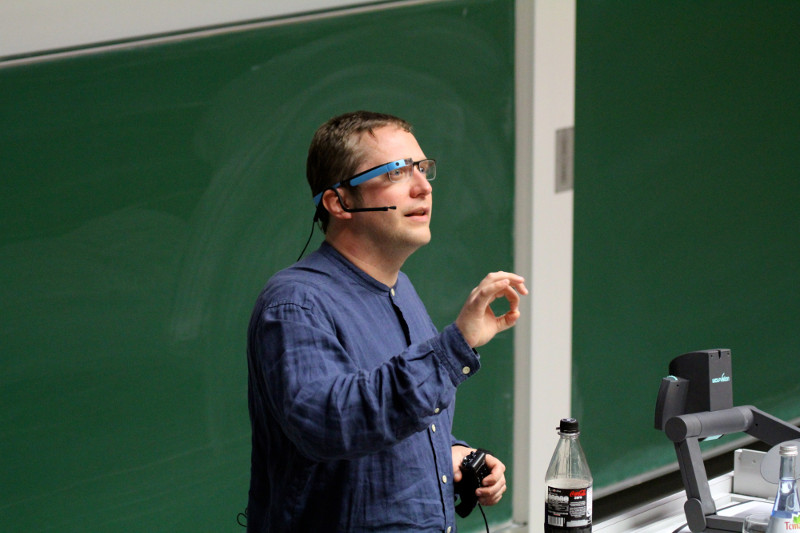 As part of my lecture Businees Aspects of the Internet of Things I could welcome Werner Hoier and Dorothea Utzt from Streetspotr.com as guest lecturers (slides).
As part of my lecture Businees Aspects of the Internet of Things I could welcome Werner Hoier and Dorothea Utzt from Streetspotr.com as guest lecturers (slides).They shared some interesting insights about their start-up which implements the idea of match-making between location-based micro-task issuing and fullfilling (as described earlier by [1]). Having reached out to 180k users who are only waiting for earning some fractions of a EURO by solving tasks like "take a picture of the menu in restaurant", "collect the GPS location of a parking lot", or "check the availability of an ATM". Without marketing but mostly relying on public media and blogs who featured their story they could build up their user base.
Interesting enough they are no longer looking for more users but rather for more job issuers. Also, so far they refrained from allowing to share user-to-user services. Their service nicely extends traditional services of market survey agencies. They reported about their most successful user who already earned a 600 EUR on their platform.
I'm really curious how this micro-task business evolves. I could well see opportunities for people waiting or being stuck somewhere and either earn money or giving something back by solving small little tasks in their downtime. Furthermore, finding a proper alignment between situation of the user and available tasks and corresponding rewards should be key to success, see also [2].
[1] Florian Alt, Alireza Sahami Shirazi, Albrecht Schmidt, Urs Kramer, and Zahid Nawaz. 2010. Location-based crowdsourcing: extending crowdsourcing to the real world. In Proceedings of the 6th Nordic Conference on Human-Computer Interaction: Extending Boundaries (NordiCHI '10). link
[2] Navkar Samdaria, Akhil Mathur, and Ravin Balakrishnan. 2012. Paying in kind for crowdsourced work in developing regions. In Proceedings of the 10th international conference on Pervasive Computing (Pervasive'12), Judy Kay, Paul Lukowicz, Hideyuki Tokuda, Patrick Olivier, and Antonio Krüger (Eds.). link









